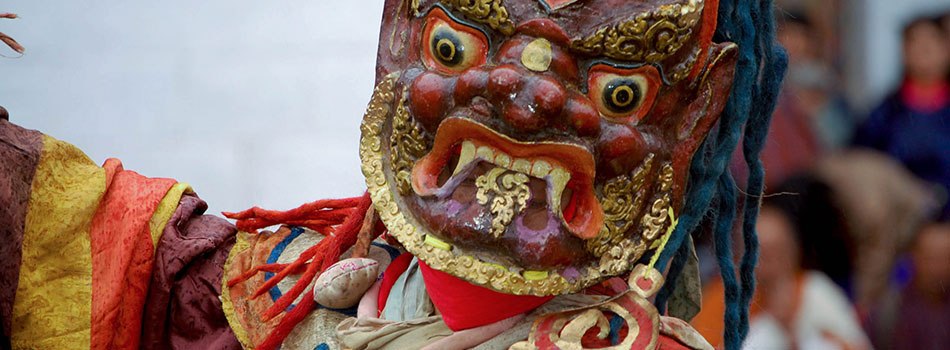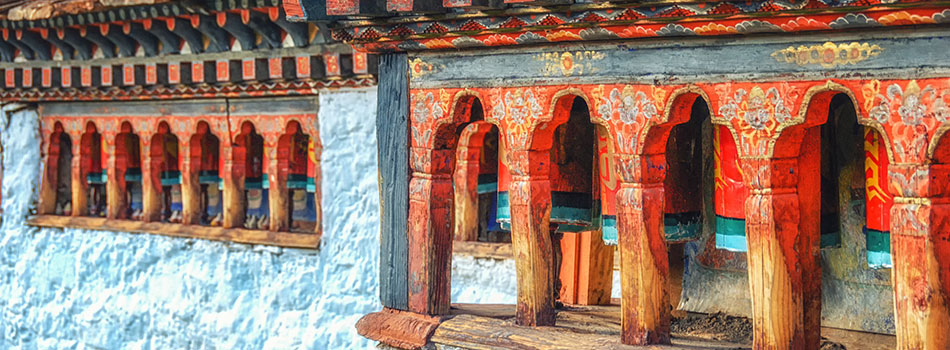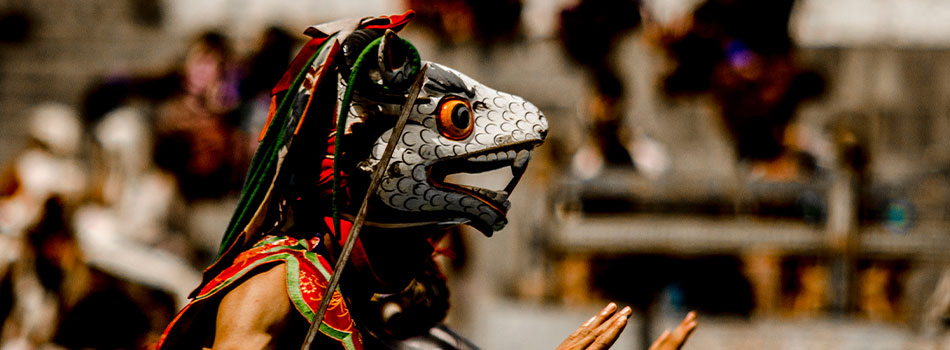Popularly known as the land of the thunder dragon, Bhutan is widely admired by the people from all over the world for its unique culture and old age traditions which its showcases through vibrant festivals that light the real beauty of the country. Festivals are the major part of the Bhutanese culture that is celebrated throughout the year each of which is celebrated with high spirit and zeal. This is the time when people showcase their talent in the form of dance and musical events. Most of the ceremonies and arts are based on the story and tales of the ancient Bhutan.

The Thimphu Festival is one of the biggest festivals in the country. It is the only time when the whole capital city of Thimphu comes to a standstill and the main street is converted into makeshift huts and small stalls and everyone in the capital is a merry-making mood. The festival is held for three days in a year and it is a holiday where people dress up in their finest costumes and go to the Tashichho Dzong, the fortress where the festival is officially held. The dates correspond to the 19th day of the 8th month of the Bhutanese lunar calendar which usually corresponds to September. People from all over the region come to Thimphu.
The festival started in Thimphu in 1867 by the 4thDrukDesi, Gyalse Tenzin Rabgay. Back then, only few new mask dances were performed but in the 1950s the third king introduced many new dances. One of the highlights of the Tsechu is the masked jesters called Atsaras who entertain people. The word ‘Atsaras’ is derived from the sankrit term ‘acharya’ who are accomplished masters. The atsaras also assist the masked dancers and help maintain decorum with their jest giving them the room to make any intervention in the dance. The Tsechu is also the biggest festival for all people of Bhutan. Different places host Tsechu during different times of the year. It commemorates the birthday of Guru Rinpoche, who visited Bhutan in the 8th century and brought the Nyingma sect of Buddhism to Bhutan. The word Tsechu translates to the 10th day. It is also the time for the Bhutanese to receive blessings and pray for health and happiness for the coming year.
The Thimphu Tsechu is preceded by the Thimphu Dromchoe, which is observed for one day. The Thimphu Dromchoe was introduced by Kuenga Gyeltshen in 1710 who was believed to be a reincarnation of a son of the Zhabdrung, the person who unified Bhutan in the 17th century. The festival dedicated to the protective goddess of Bhutan, Palden Lhamo. Several dances are performed to appease the deity. It is believed that Palden Lhamo magically appeared before Kuenga Gyeltshen while he was in meditation and performed some dances which he later introduced during the Dromchoe and are still performed to this day.

Along with the Thimphu Tshechu, the Paro Tshechu is one of the biggest festivals in Bhutan. It is a festival that attracts the maximum number of tourists into Bhutan. This is the biggest festival in the spring season. It is held for five days at a stretch.
Many different kinds of masked dances and traditional local dances and songs are performed during the festival. People from all over the region come to the festival dressed in the best traditional costumes. The festival is held at the courtyard of the 17th century Paro Rinpung Dzong.
On the last day of the festival, a gigantic Thangka (embroidered painting) of Guru Rinpoche is hung inside the Dzong. It is said to be the biggest Thangka in the world. It is believed that a mere sight of the Thangka would cleanse an onlooker of all sins and it is displayed foe the public only once a year.
This festival in the central Bhutan is most popular for the naked dance performed at the wee hours of midnight when dancers perform the dance in utter freezing temperatures. Witnessing the dance is believed to cleanse on of evils and also give children to childless couples. This is one of the most popular festivals in Bhutan that is celebrated for a total of 5 days and also the biggest of the hundreds of festivals hosted in the entire district of Bumthang.
The Jambay Lhakhang Temple, along with the Kichu Monastery in Paro, is one of the oldest temples in the country built in the 7th century. The two temples in Bhutan are part of the 108 temples built in a single day in subdue a demon and to spread Buddhism in the Himalayan region. The main relics include the future Buddha Jomo Jampa (Maitreya) and it is the main shrine in all the 108 temple series built on the same day. It is believed that Guru Rinpoche visited this temple several times miraculously and it is for this reason that it is considered very sacred. This temple has undergone several rounds of renovations.
The Gomphu Kora festival in Trashi Yangtseis is one of the most popular festivals in eastern Bhutan. It is one of the unique festivals where the most popular activity is circumambulating the Gomphu Kora temple. The Gomphu means meditation cave while the Kora means circumambulation. Not only is the festival popular in Bhutan, people from the adjacent Indian state of Arunachal Pradesh come to the festival every year. This festival celebrates the triumph of good over evil.
Legend has it that in the 8th century, Guru Rinpoche went to Tibet when the Samye Monastery was being built. It is said that everything build during the day were completely destroyed at night by evil forces. Guru Rinpoche then subdues evil forces at the site. During the time, one evil spirit escapes from Tibet and reaches the present day site of Gomphu Kora. The Guru follows the demon and meditates inside a huge rock and eventually subdues the demon. He also builts a small stupa at the site. The rock where the Guru mediated still exists and adjacent to it is the Gomphu Kora Temple which was first built in the 9th century.
The festival was introduced in the 16th century by the fourth Druk Desi, Gyalsey Tenzin Rabgye. Like all Tsechus, the festival time sees the otherwise remote temple brim up to life. People from all over eastern Bhutan come to take blessings and they enjoy the dances during the day and circumambulate the temple throughout the night. In the past, the circumambulation provided a good platform for the young to find their lovers.
The vicinity of the temple has many relics of the Guru including his footprints, body prints and even some personal belongings. It is one of the most sacred sites of Guru Rinpoche.

The Dremetse Tshechu (festival) is one of the most important festivals in eastern Bhutan. It is one festival that unites the most fabled Bhutansese teacher, Pema Lingpa, and Guru Rinpoche who visited Bhutan in the 8th century and brought Nyingma sect of Buddhism to Bhutan. One of Bhutan’s most popular dance, the Dremetse Ngacham, also called the Dance of the drums of Dremetse, was born in this place. The dance has been selected as one of the 80global masterpieces of the Oral and Intangible Heritage of Humanity in 2005 by UNNESCO. It is a highly revered dance and performed in Tsechus all over the country.
While performing the Dremetse Ngacham, it is required of the dancers to visualize themselves as deities. They hold a drum in their left hand and a drumstick in their right. It is a dramatization of the dance performed in heaven called Zangdo Pelri, which is the celestial abode of Guru Rinpoche. It is believed that a descendent of Pema Lingpa, a nun called Chorten Zangmo lived at the Dremetse Monastery. Her brother, a learned and revered saint, Kuenga Gyelshen, is said to have miraculously seen Guru Rinpoche and visited his abode several times. In one such encounter, he sees deities perform a dance at Zangdo Pelri after which he comes back to Dremetse and introduces the same dance at the monastery.
20 N / 21 D
05 N / 06 D
08 N / 09 D